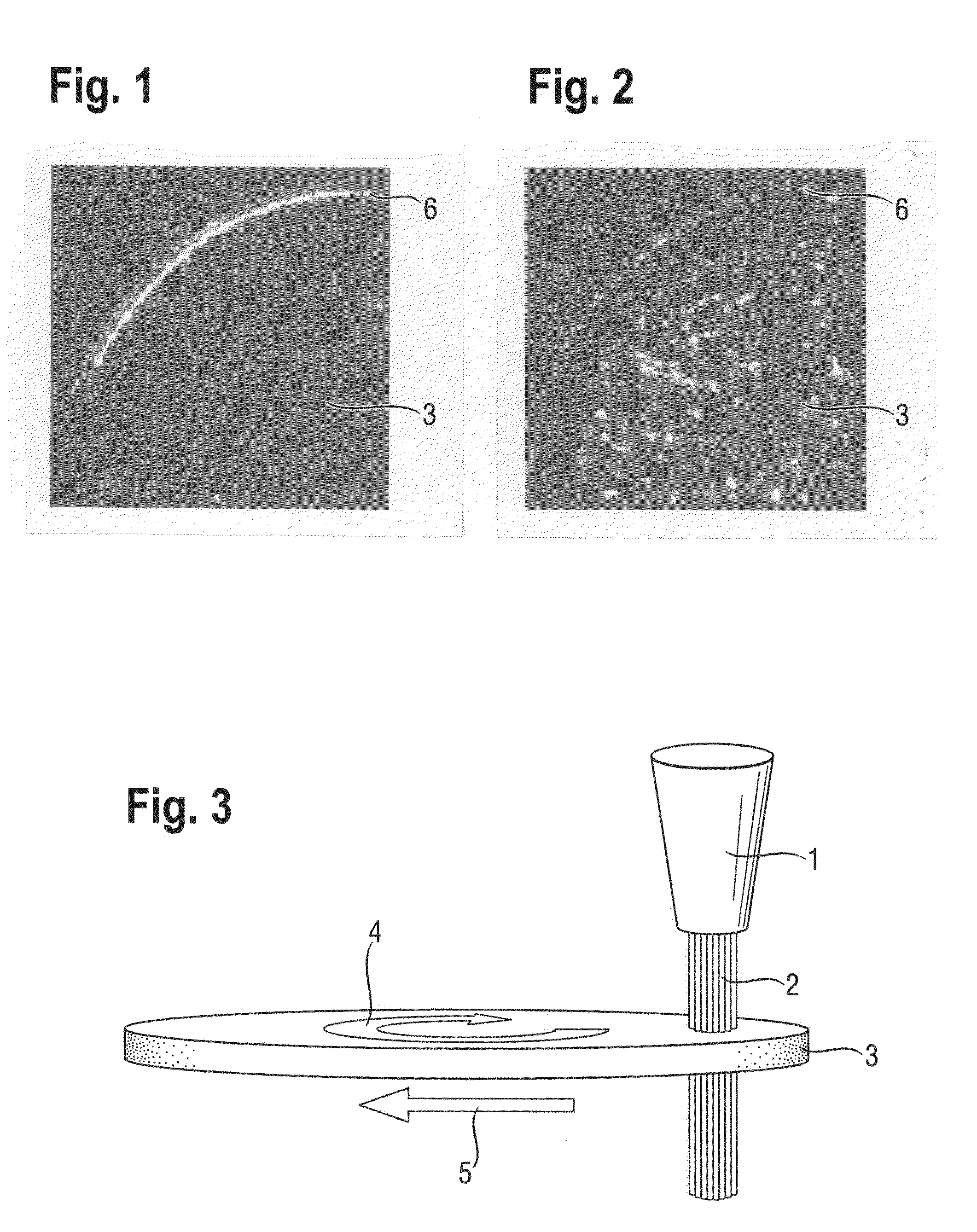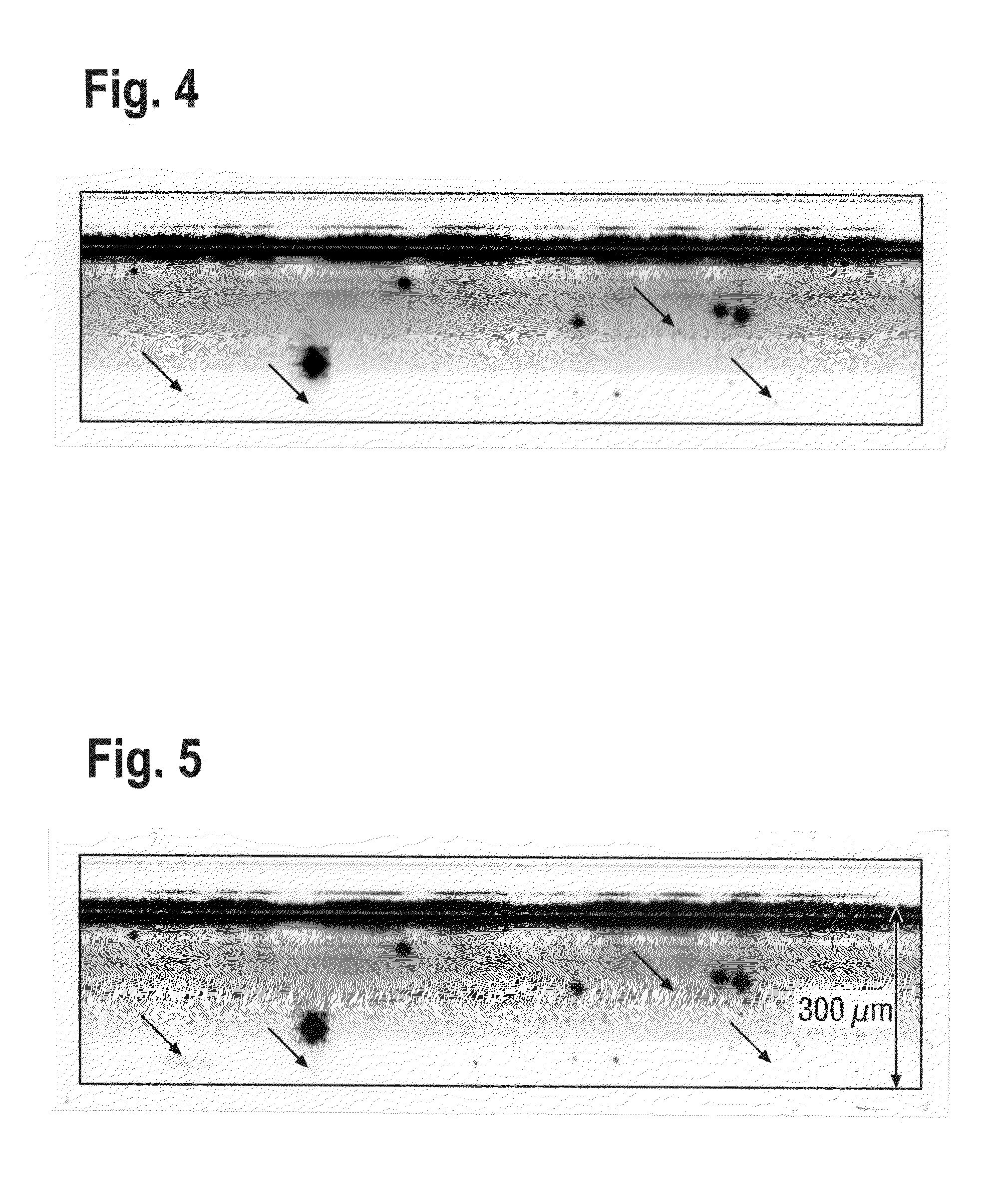Monocrystalline semiconductor wafer comprising defect-reduced regions and method for producing it
a semiconductor wafer and defect reduction technology, applied in the field of monocrystalline semiconductor wafers, can solve the problems of poor reliability, problems in the reliability of gate oxides, and the best semiconductor wafers known at the moment, and achieve the effect of higher defect density
- Summary
- Abstract
- Description
- Claims
- Application Information
AI Technical Summary
Benefits of technology
Problems solved by technology
Method used
Image
Examples
Embodiment Construction
)
[0016]The term “GOI relevant” defects denotes all defects which adversely affect the quality of a gate oxide produced at the corresponding location. The density of the GOI relevant defects is preferably measured with the aid of the method of IR-Lock-In thermography disclosed in DE19835616A1, since this method enables large-area detection of precisely those defects which cause GOI defects. Thus, in contrast to conventional GOI tests, even very low defect densities of 0.1 / cm2, for example, can be determined quantitatively.
[0017]By contrast, other detection methods such as e.g. laser scanning methods by which the entire wafer surface is examined for defects are significantly less well suited since although the defects detected by said methods can lead to a failure of a component, they need not necessarily lead to such failure. Defects that have no influence on the GOI-quality, such as e.g. particles adhering to the surface, are also detected. On the other hand, in the production of mi...
PUM
| Property | Measurement | Unit |
|---|---|---|
| temperature | aaaaa | aaaaa |
| temperature | aaaaa | aaaaa |
| wavelength | aaaaa | aaaaa |
Abstract
Description
Claims
Application Information
 Login to View More
Login to View More - R&D
- Intellectual Property
- Life Sciences
- Materials
- Tech Scout
- Unparalleled Data Quality
- Higher Quality Content
- 60% Fewer Hallucinations
Browse by: Latest US Patents, China's latest patents, Technical Efficacy Thesaurus, Application Domain, Technology Topic, Popular Technical Reports.
© 2025 PatSnap. All rights reserved.Legal|Privacy policy|Modern Slavery Act Transparency Statement|Sitemap|About US| Contact US: help@patsnap.com



